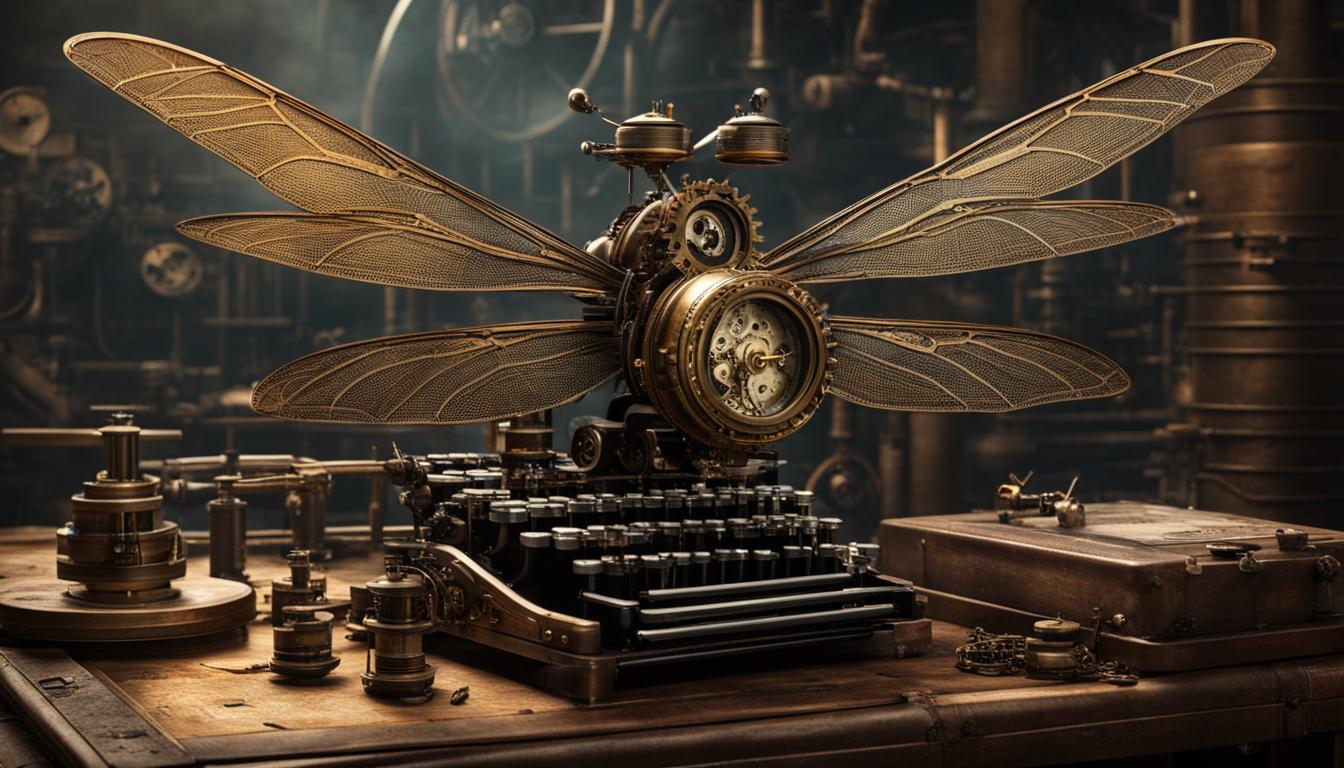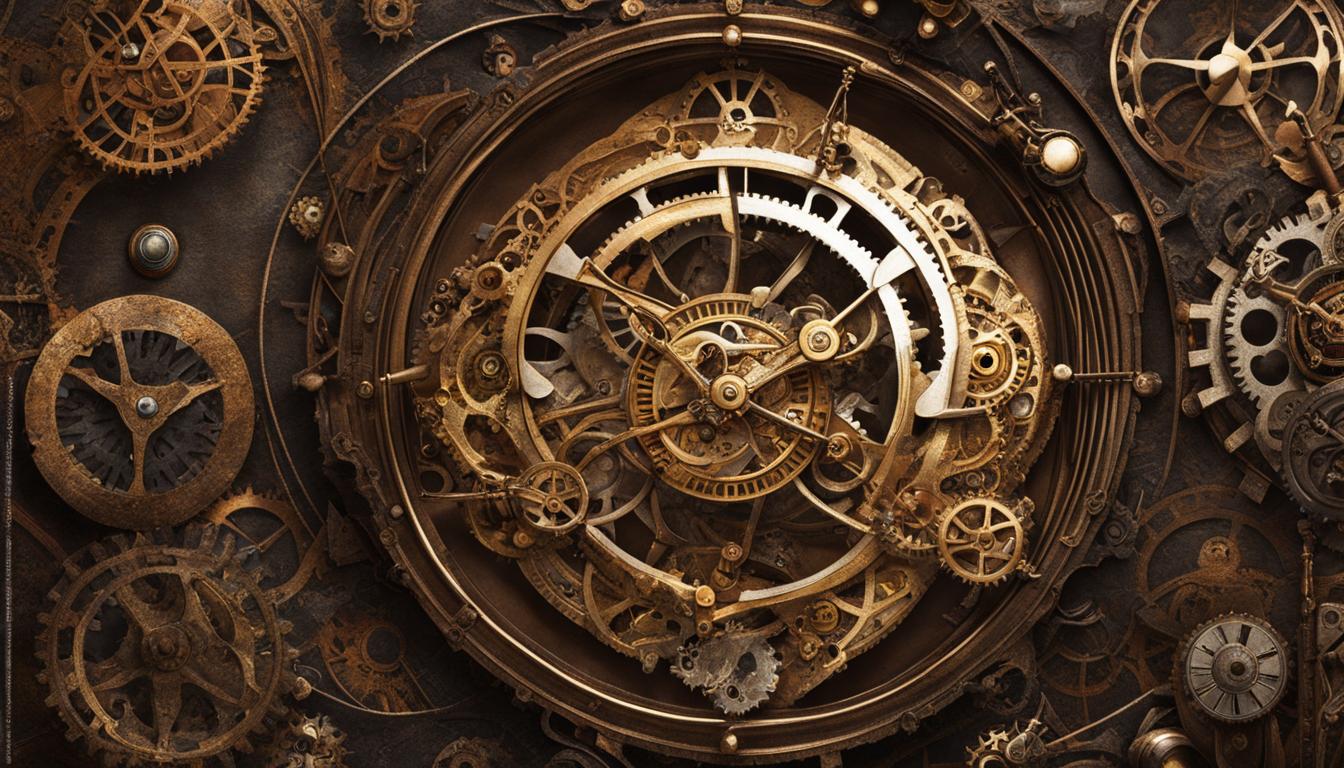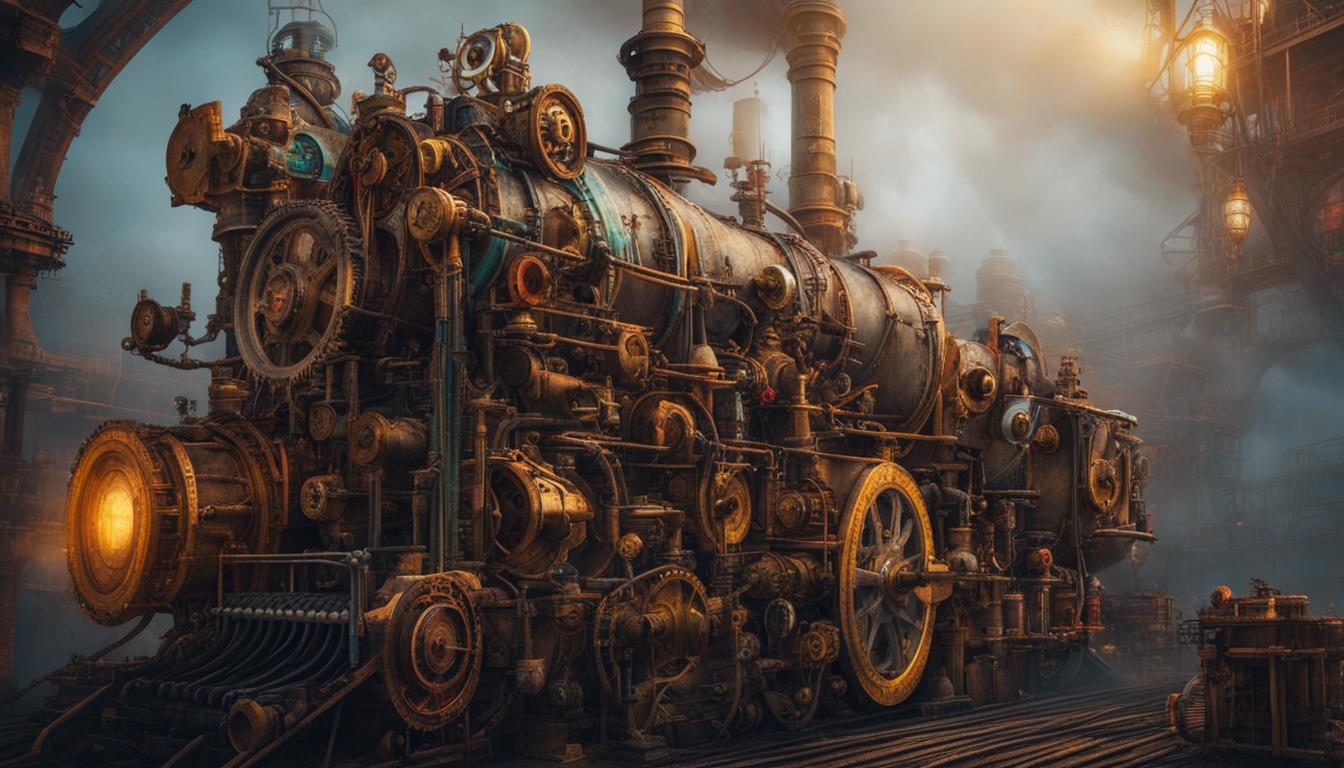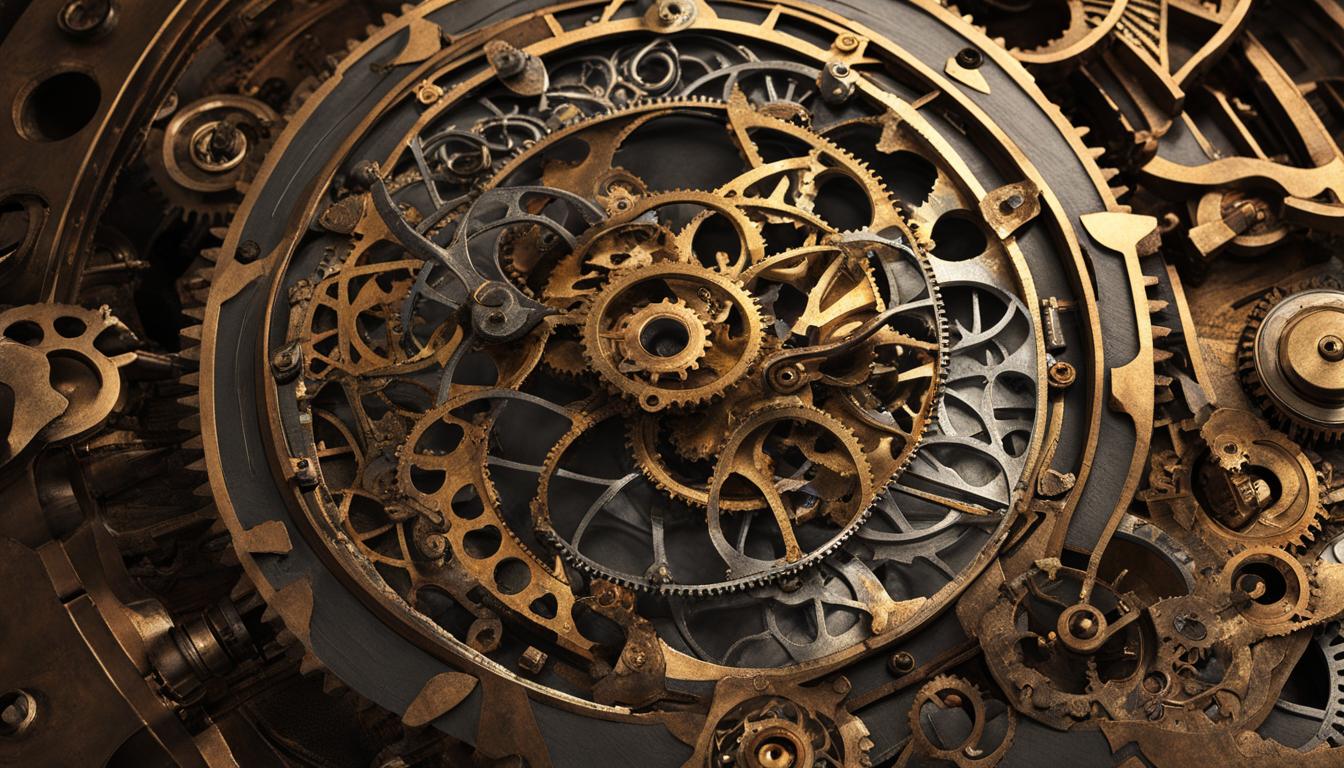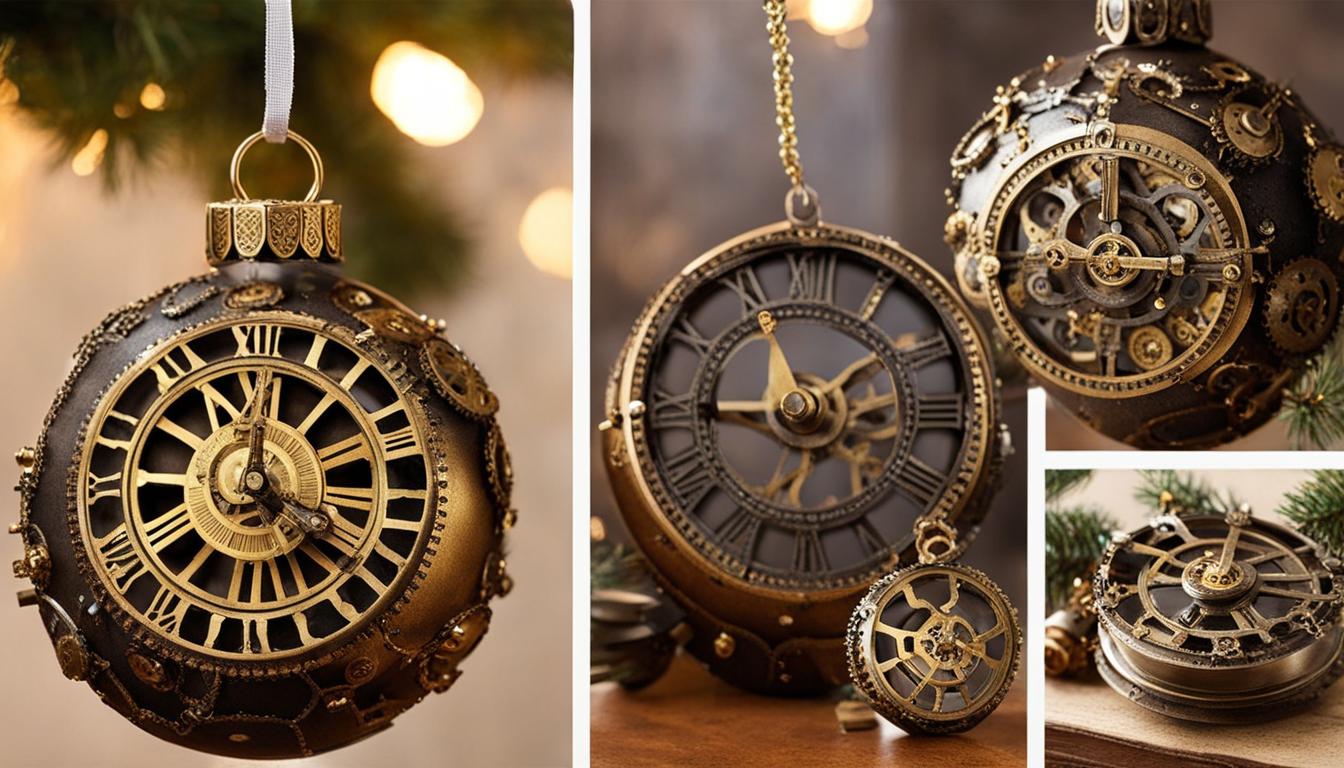Steampunk art is a captivating genre that seamlessly blends art and technology, creating mesmerizing crafts that transport us to a world that fuses the past with the future. From intricately designed sculptures to fashion-forward accessories, steampunk artists push the boundaries of creativity, weaving together the elegance of Victorian aesthetics with the ingenuity of futuristic elements.
In this article, we delve into the fascinating world of steampunk art, exploring the history, styles, and techniques that make it a truly unique form of artistic expression. Join us as we unravel the secrets behind the fusion of art and technology in the realm of steampunk crafts.
Key Takeaways:
- Steampunk art merges Victorian aesthetics with futuristic elements, creating visually stunning and imaginative artworks.
- Steampunk artists use a variety of materials such as metal, leather, wood, and fabric to bring their visions to life.
- By blending art and technology, steampunk crafts inspire awe and fascination among artists and enthusiasts alike.
- Explore the diverse styles and themes within the steampunk genre, including industrial, romantic, explorer, and post-apocalyptic steampunk.
- Imagination is the key tool for steampunk artists, allowing them to transform ordinary materials into extraordinary tech-art masterpieces.
The History of Steampunk Art
Steampunk art emerged in the late 20th century as an alternative history science fiction genre that expanded into the visual arts. It combines the Victorian era aesthetics with elements of science fiction, creating a unique and captivating genre that continues to inspire artists and enthusiasts.
The term “steampunk” was coined in 1987 and since then, it has grown into a thriving community of artists who bring the steampunk universe to life through their physical creations. Steampunk art incorporates a wide range of mediums, including paintings, sculptures, fashion, and even functional designs such as gadgets and accessories.
With its roots in literature, steampunk art draws inspiration from the Victorian era, incorporating elements such as gears, cogs, clocks, and airships. These artifacts of the past are reimagined and combined with futuristic elements, showcasing a world powered by steam and imagination.
Steampunk Genre
The steampunk genre is a blend of history, science fiction, and fantasy. It imagines a world where technology advanced differently, where steam-powered machines and Victorian aesthetics dominate. This unique combination creates a sense of nostalgia for a bygone era while presenting a vision of what the future could have been.
Steampunk art allows artists to explore the possibilities of this genre, creating artworks that transport viewers to imaginary worlds filled with intricate machinery, opulent fashion, and an atmosphere of adventure and discovery.
“Steampunk art offers a fascinating glimpse into an alternate reality, where the past and the future collide in a symphony of gears and steam. It’s a visual feast for the eyes, capturing the imagination and inviting viewers to step into a world filled with wonder.”
Victorian Era Aesthetics
At the core of steampunk art is the fusion of Victorian era aesthetics with futuristic elements. The Victorian era is synonymous with elegance, opulence, and intricate craftsmanship. Steampunk artists take these characteristics and infuse them with a sense of adventure and innovation.
The Victorian fashion, architecture, and design serve as a starting point for artists, who then incorporate mechanical elements, such as gears and boilers, to create a distinctive steampunk aesthetic. The result is a visual tapestry that seamlessly blends the beauty of the past with the possibilities of the future.
The Evolution of Steampunk Art
Since its inception, steampunk art has evolved and diversified, encompassing various styles and themes. From industrial steampunk that focuses on mechanical aspects to romantic steampunk that emphasizes fashion and elegance, there is something for everyone in this genre.
| Steampunk Styles | Steampunk Themes |
|---|---|
| Industrial Steampunk | Adventure and Exploration |
| Romantic Steampunk | Mystery and Intrigue |
| Vintage Steampunk | Post-Apocalyptic |
| Explorer Steampunk | Time Travel |
These diverse styles and themes add depth to the steampunk genre, allowing artists to explore different facets of this imaginative world.
In conclusion, the history of steampunk art can be traced back to its origins in literature, from which it expanded into a visual art form. The genre combines Victorian era aesthetics with futuristic elements, creating a captivating fusion of the past and the future. With its diverse styles and themes, steampunk art continues to inspire and fascinate artists and enthusiasts around the world.
Merging Victorian Aesthetics with Future Elements
Merging Victorian aesthetics with future elements is at the heart of steampunk art. It’s an intriguing concept that combines the elegance of the Victorian era with the excitement of a steam-powered future. Steampunk artists reimagine familiar objects in unfamiliar ways, creating visually stunning works that captivate the imagination.
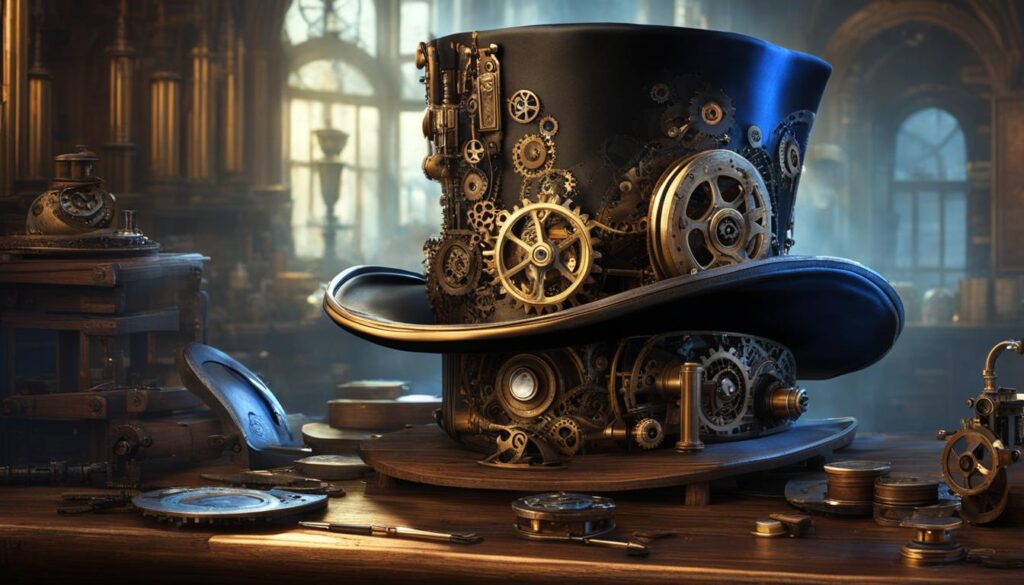
Steampunk art finds beauty in the intricate details of Victorian design, such as ornate patterns and delicate craftsmanship. The use of brass, copper, and other industrial materials adds a touch of authenticity to the artworks, evoking a sense of nostalgia and historical charm.
But the allure of steampunk art lies in its ability to transport us to a world that never existed. By incorporating futuristic elements like gears, cogs, and clockwork mechanisms, artists create a sense of wonder and curiosity. This blending of past and future allows us to explore what could have been, and what might still be.
Contrasting Victorian and Future Elements in Steampunk Art
One of the intriguing aspects of steampunk art is the contrast between the Victorian and futuristic elements. The juxtaposition of delicate lace and rugged metal, intricate carvings and industrial machinery, creates a visually striking composition. This contrast not only adds depth to the artwork but also tells a story of innovation and progress.
Steampunk artists often take inspiration from the technological advancements of the Industrial Revolution, incorporating steam-powered engines, airships, and mechanical contraptions. These elements symbolize the potential of human ingenuity and the limitless possibilities of the future.
| Victorian Aesthetics | Future Elements |
|---|---|
| Ornate patterns | Gears and cogs |
| Delicate lace | Industrial machinery |
| Rich colors | Steampowered engines |
| Timepieces | Airships |
By merging these contrasting elements, steampunk art sparks our imagination and invites us to explore new realms of possibility. It challenges us to reconsider our assumptions about art, technology, and the boundaries between them.
Steampunk Art Styles and Themes
Steampunk art is a diverse and dynamic genre that encompasses a wide range of styles and themes. From industrial steampunk to romantic steampunk, each style brings its own unique elements to the genre, creating a rich tapestry of artistic expression.
Industrial Steampunk
In industrial steampunk, the focus is on mechanical elements and the gritty aesthetics of machinery and industry. Gears, cogs, and steam-powered contraptions take center stage, creating a sense of rugged beauty and functionality. This style often incorporates a mix of metal, brass, and copper, showcasing the intricate workings of the machines.
Romantic Steampunk
On the other end of the spectrum, romantic steampunk emphasizes the elegance and beauty of the Victorian era. Inspired by classic literature and fashion, this style incorporates elements such as lace, corsets, and top hats, creating a sense of nostalgia and whimsy. The focus is on intricate details, delicate embellishments, and a touch of fantasy, evoking a sense of wonder and enchantment.
Explorer Steampunk
Explorer steampunk transports us to a world of adventure and discovery. Drawing inspiration from explorers and pioneers of the past, this style incorporates elements such as maps, compasses, and vintage travel gear. It captures the spirit of exploration and the thirst for knowledge, creating a sense of wonder and excitement.
Post-Apocalyptic Steampunk
In post-apocalyptic steampunk, the genre takes a dark and dystopian twist. This style envisions a future where society has collapsed, and steam power is used to rebuild and survive. Rugged and worn materials, tattered clothing, and makeshift machinery all contribute to the atmosphere of a world on the brink of chaos. It explores themes of resilience, adaptation, and the human spirit in the face of adversity.
| Steampunk Art Styles | Key Themes |
|---|---|
| Industrial Steampunk | Mechanical elements, industrial aesthetics |
| Romantic Steampunk | Victorian elegance, whimsical details |
| Explorer Steampunk | Adventure, discovery, exploration |
| Post-Apocalyptic Steampunk | Dystopian future, survival, resilience |
These are just a few examples of the diverse styles and themes within the steampunk genre. Each style offers a unique perspective and allows artists to explore different aspects of the genre. Whether it’s the raw power of industry, the beauty of the past, the thrill of exploration, or the resilience of humanity, steampunk art continues to captivate and inspire with its rich tapestry of styles and themes.
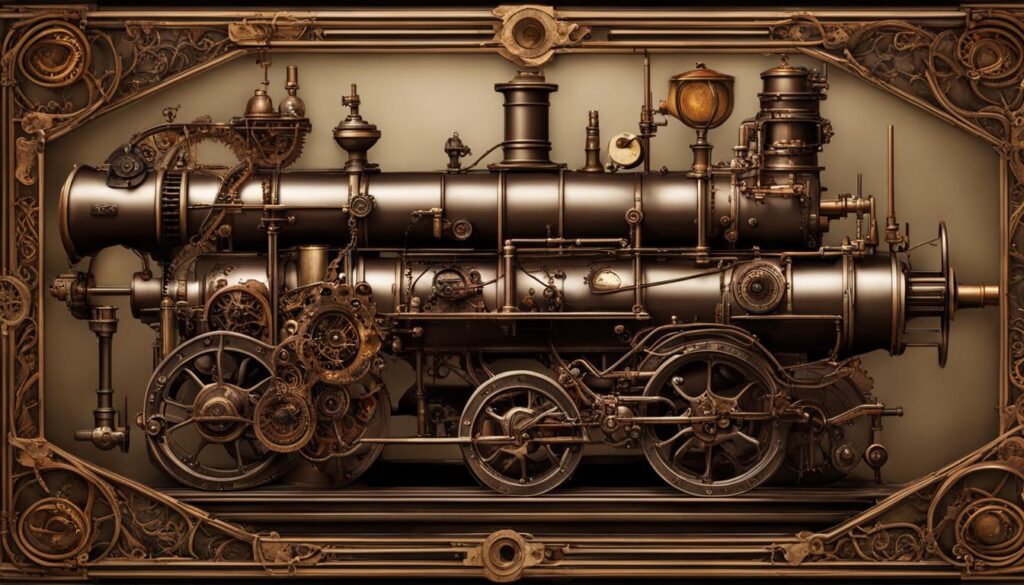
MATERIALS AND TOOLS FOR STEAMPUNK ART
When it comes to creating steampunk art, the right materials and tools are essential for bringing imagination to life. Steampunk artists often work with a wide range of materials, including metal, leather, wood, and fabric. These materials allow them to capture the industrial and Victorian aesthetics that define the steampunk genre.
Tools play a crucial role in the creation of steampunk art. Pliers, wire cutters, soldering irons, and basic woodworking tools help artists manipulate and transform materials into intricate and detailed pieces. The use of these tools requires skill and precision, as steampunk art often involves intricate metalwork and mechanical elements.
However, the most important tool for any steampunk artist is their imagination. This genre encourages artists to think outside the box and envision a world where technology and Victorian aesthetics coexist. By harnessing their creativity, steampunk artists can transform ordinary objects into extraordinary works of art, showcasing the fusion of art and technology in captivating ways.
| Materials | Tools |
|---|---|
| Metal | Pliers |
| Leather | Wire cutters |
| Wood | Soldering irons |
| Fabric | Basic woodworking tools |
The fusion of art and technology in steampunk art comes to life through the skilled use of materials such as metal, leather, wood, and fabric, as well as the meticulous application of tools including pliers, wire cutters, soldering irons, and basic woodworking tools. However, the true magic lies within the artist’s imagination, allowing them to transform these materials into extraordinary works of art that celebrate the unique blend of Victorian aesthetics and futuristic elements.
Steampunk art thrives on the ingenuity and creativity of its practitioners, who break free from traditional artistic boundaries to craft one-of-a-kind pieces that transport viewers to a world where steam-powered technology reigns supreme. By embracing the rich variety of materials and tools available, steampunk artists can unleash their artistic vision and bring their imaginative concepts to life.
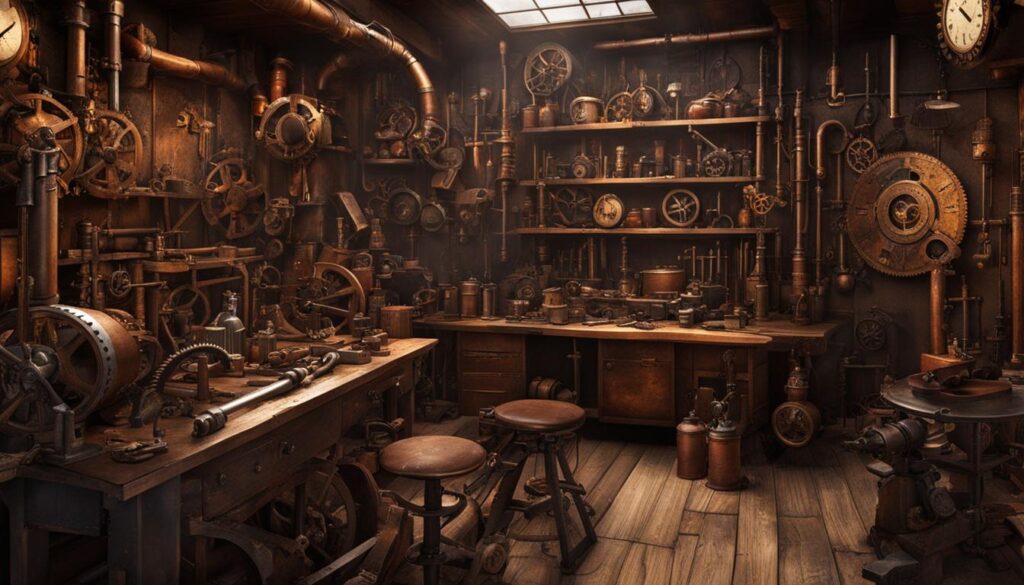
Steampunk Materials and Tools: Fueling Artistic Innovation
The diverse range of materials and tools used in steampunk art fuels a constant sense of innovation and experimentation. Artists push the boundaries of creativity by combining unexpected materials, such as repurposed vintage objects or salvaged machinery, with traditional artistic mediums. This blend of old and new elements adds depth and complexity to their creations, reflecting the essence of steampunk itself.
Conclusion
Steampunk art is a captivating genre that seamlessly merges the realms of art and technology, resulting in extraordinary and visually stunning creations. By skillfully blending Victorian era aesthetics with futuristic elements, steampunk artists have mastered the art of creating a unique fusion of tech and art.
This enchanting genre has a rich and intriguing history, evolving from its origins in alternative history science fiction to encompass various art forms such as paintings, sculptures, fashion, and more. Steampunk artistry with a tech twist continues to inspire and fascinate artists and enthusiasts alike, showcasing the boundless possibilities when art and technology collide.
With its diverse range of styles and themes, steampunk art offers something for everyone. From industrial steampunk that emphasizes mechanical elements to romantic steampunk that celebrates Victorian fashion, each style adds depth and variety to this captivating genre. It is a field where imagination thrives, transforming ordinary materials into extraordinary works of art, thereby further blurring the boundaries between art and technology.
Steampunk art is a testament to the human imagination and the limitless possibilities it holds. Whether it’s through intricate sculptures, breathtaking paintings, or innovative fashion designs, this genre continues to captivate audiences with its mysterious allure. The fusion of art and technology in steampunk serves as a reminder that creativity knows no bounds and that the blending of contrasting elements can yield extraordinary results.
FAQ
What is steampunk art?
Steampunk art is a captivating blend of past and future, combining Victorian era aesthetics with elements of science fiction. It goes beyond traditional art forms and transcends into fashion, literature, films, and even architecture.
When did steampunk art emerge?
Steampunk art didn’t take shape until the late 20th century, arising from the literary world as a type of alternative history science fiction. The term “steampunk” was coined in 1987, and since then, the genre has expanded into visual arts.
How do artists merge Victorian aesthetics with future elements in steampunk art?
Merging Victorian aesthetics with future elements is at the heart of steampunk art. It involves preserving the elegance of the Victorian era while incorporating the intrigue of a steam-powered future. This can be achieved by reimagining familiar objects in an unfamiliar way.
What are the different styles and themes of steampunk art?
Steampunk art is a diverse genre with a wide range of styles and themes. Industrial steampunk focuses on mechanical elements, while romantic steampunk emphasizes Victorian fashion and elegance. Explorer steampunk brings a sense of adventure and discovery, and post-apocalyptic steampunk imagines a future where society has collapsed and been rebuilt with steam power.
What materials and tools are commonly used in steampunk art?
Steampunk art often incorporates a variety of materials such as metal, leather, wood, and fabric. Commonly used tools include pliers, wire cutters, soldering irons, and basic woodworking tools. The most important tool, however, is imagination.

